Henry Martyn in a window in All Saints’, Cambridge
Henry Martyn was born in 1781 in Truro in Cornwall, where he went to school, and won a scholarship to read mathematics at St John’s College, Cambridge, where he became a Fellow before starting his missionary work, in the course of which he died in 1812. He is commemorated in windows in the baptistry and nave of Truro Cathedral.
All Saints’, Cambridge, n4
The window is in memory of three former vicars of All Saints’. Its subject is “Three great Cambridge Christians.”:4
- George Herbert, who stands for quiet parish work and the Cambridge School of Poetry.
- Bishop Brooke Westcott, who stands for Cambridge Scholarship and zeal for social righteousness.
- Henry Martyn, who stands for the missionary spirit of Cambridge Churchmen, and the ideals of the Student Movement, which had lately honoured his memory.
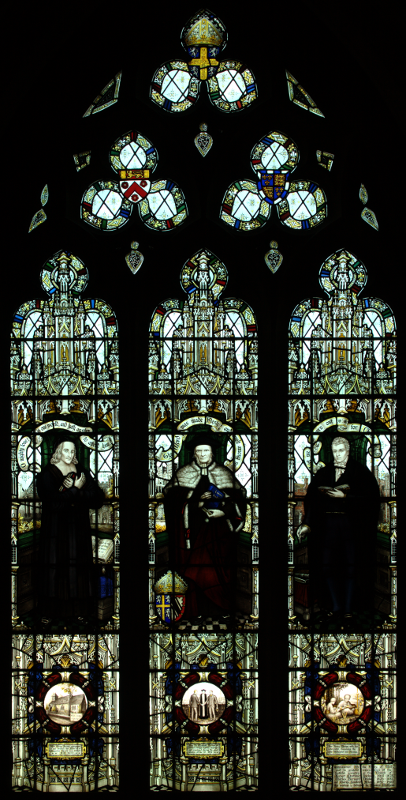
n4. To the Glory of God, and in grateful remembrance of the faithful ministry in this Church of Herbert Mortimer Luckock, 1865–1875, Charles Bernard Drake, 1876–1881, and Charles Lawford Acland, 1892–1903 this window is dedicated by Frances Matthew.
The window shows, from left to right, George Herbert, Brooke Westcott and Henry Martyn. Below each is a medallion showing an aspect of their life (Bemerton Church, where George Herbert was rector; Brooke Westcott bringing about reconciliation between employers and employees during the 1892 Durham miners’ strike; Henry Martyn translating the bible into Persian). In the trefoils in the tracery are the arms of, from left to right, Trinity College, Cambridge, of which Herbert and Westcott were members, the Diocese of Durham (Westcott became Bishop of Durham), and St John’s College, Cambridge, of which Henry Martyn was a member.
It was made by CE Kempe & Co. Ltd (their rebus, a black tower superimposed on a wheatsheaf, is in the bottom left-hand corner of 1a) and was inserted in 19231.
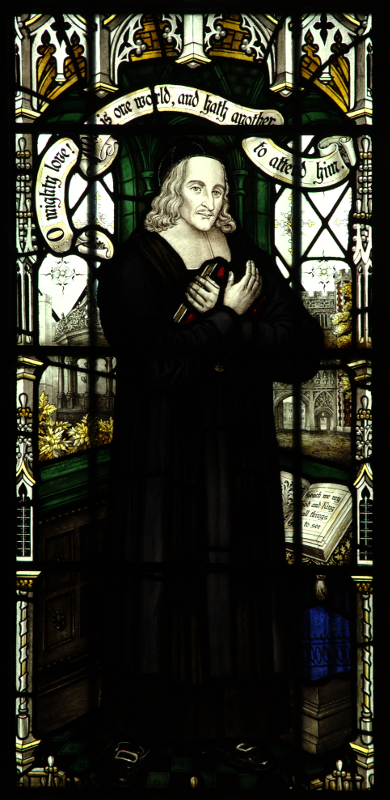
n4, 2a. O mighty Love! Man is one world, and hath another to attend him (from George Herbert’s poem Man).
George Herbert, represented as a parish priest, with part of Trinity College, of which he was a Fellow,
behind him. The text in the book to his left is Teach me my God and King / In all things Thee to see
,
the first two lines of a hymn written by him.
This view of the Great Gate of Trinity College is how it appears from what is now Heffers bookshop, which
was the shop belonging to the family of the donor of the window.
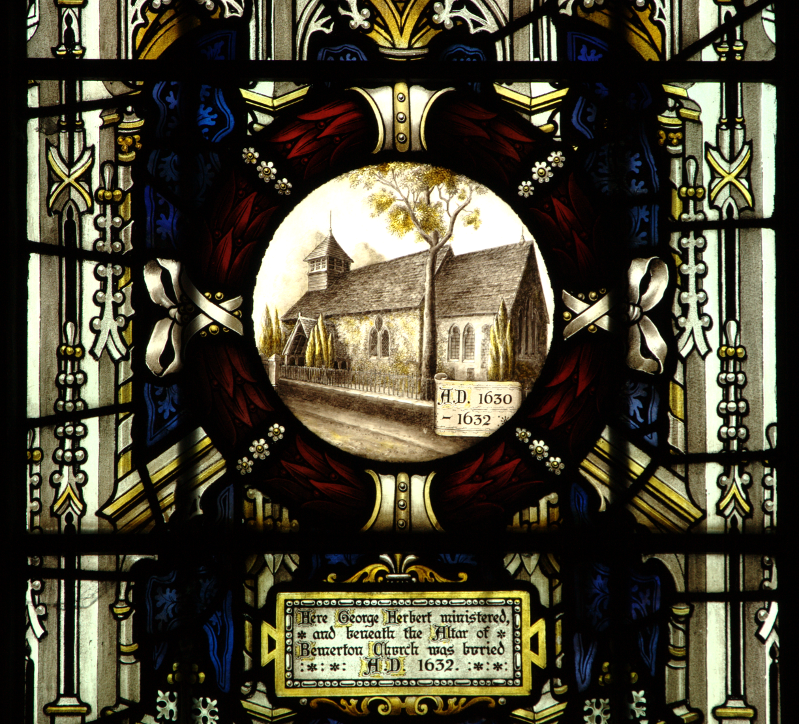
n4, 1a. Here George Herbert ministered, and beneath the Altar of Bemerton Church was buried A.D. 1632.
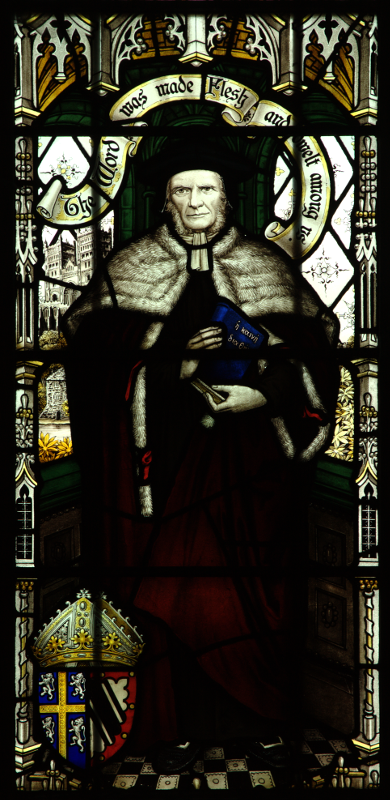
n4, 2b. The Word was made Flesh and dwelt among us (John 1:14).
Brooke Westcott, represented as Professor of Divinity at Cambridge4.
In the background are the towers of Durham Cathedral (he became Bishop of Durham). He holds a book entitled
ἡ καινή διαθήκη
(The New Testament
, a reference to the Westcott and Hort edition of the Greek New Testament).
In the lower left are the arms of Westcott as Bishop of Durham. The arms of Westcote are argent a bend cotised sable, a border gules bezantée. (Burke 1884 p. 1094).
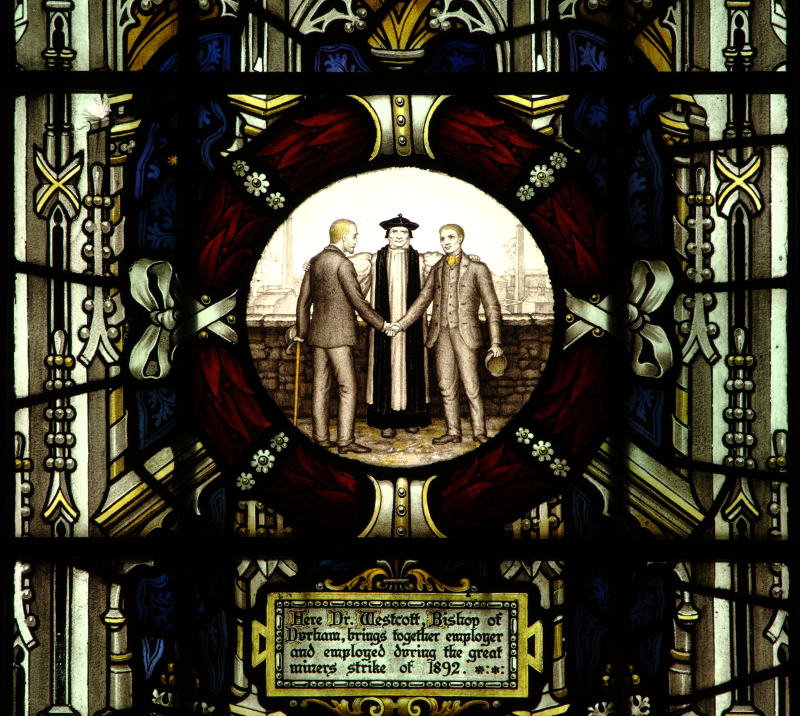
n4, 1b. Here Dr. Westcott, Bishop of Durham, brings together employer and employed during the great miners strike of 1892.
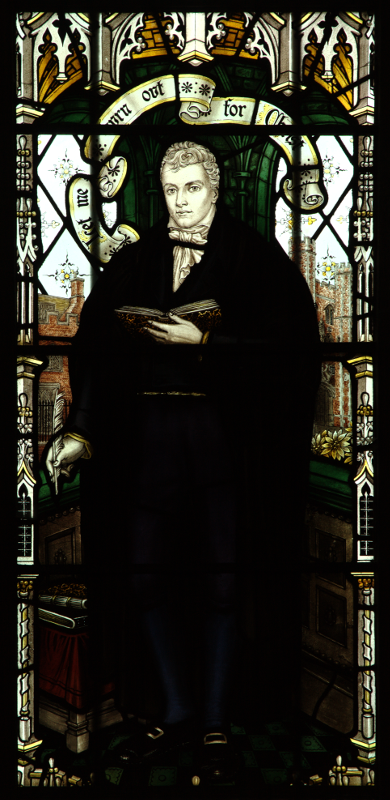
n4, 2c. Let me burn out for Christ (Henry Martyn).
Henry Martyn, represented as in his portrait in the University Library4 (or possibly this portrait in St John’s College) holding a book in his left hand and a quill pen in his right hand, with the Great Gate of St John’s College, of which he was a Fellow, in the background. This view of St John’s College is how it appears from what is now All Saints’ Garden, which is the site of the original All Saints’ Church.
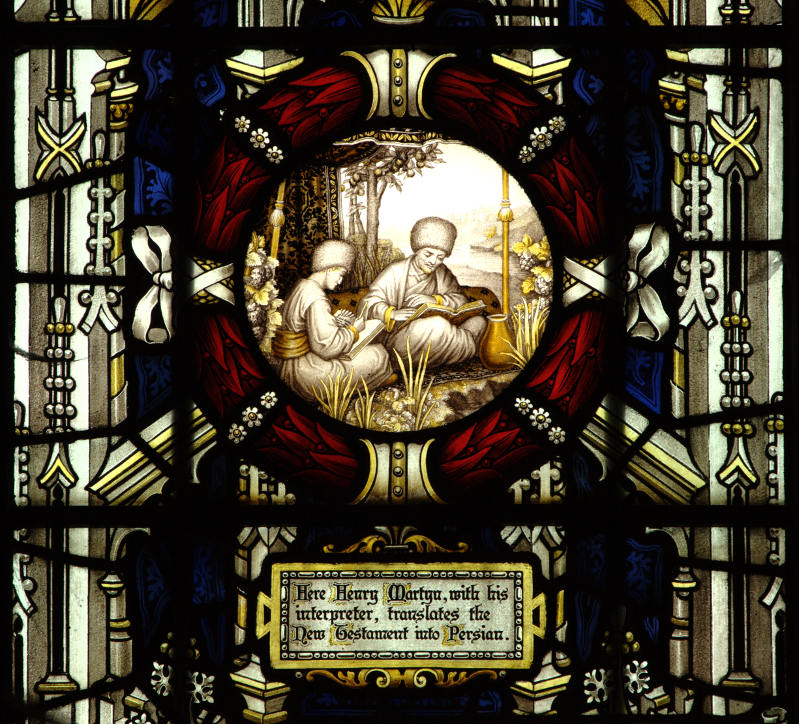
n4, 1c. Here Henry Martyn, with his interpreter, translates the New Testament into Persian.
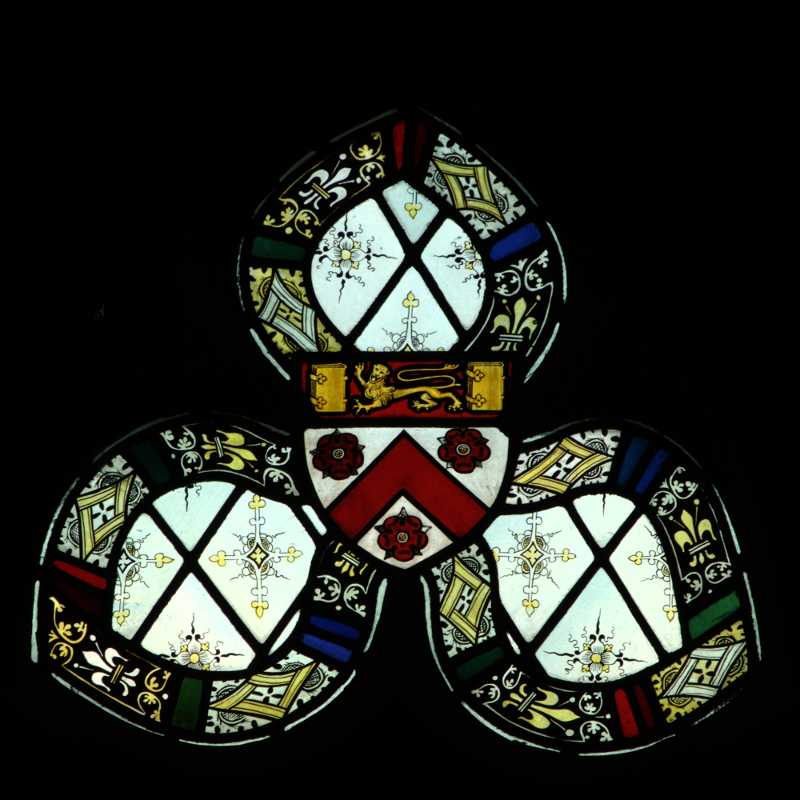
The left-hand trefoil in the tracery, containing the arms of Trinity College, of which George Herbert and Brooke Westcott were members.
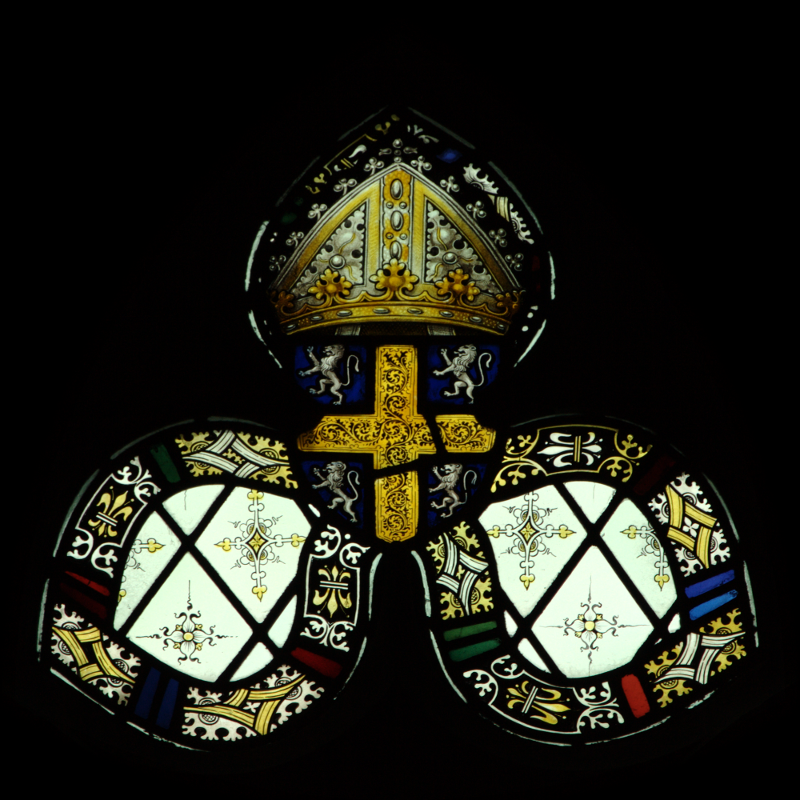
The central trefoil in the tracery, containing the arms of the Diocese of Durham. Brooke Westcott was Bishop of Durham.
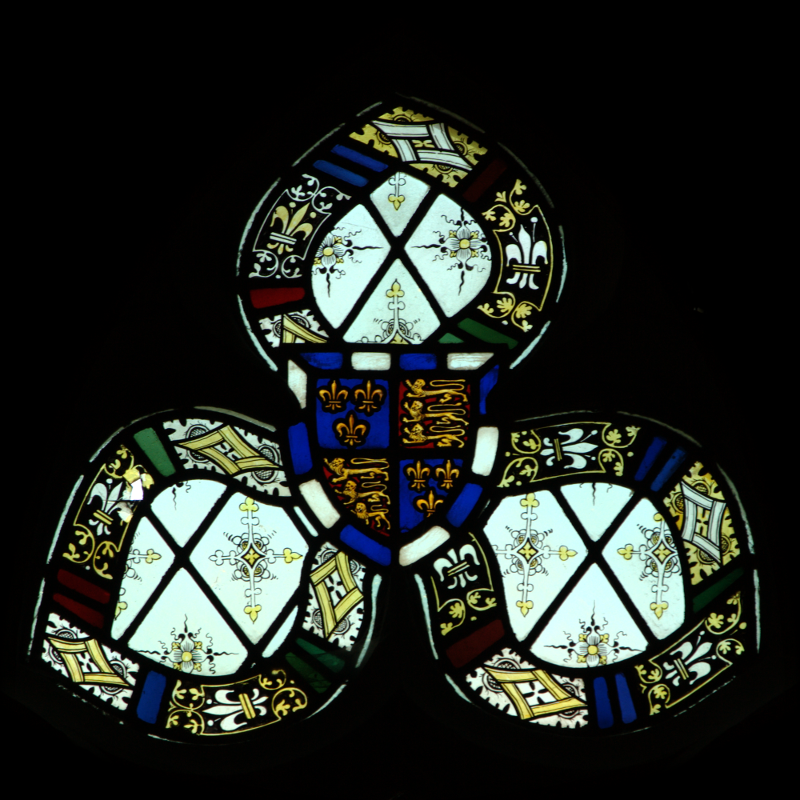
The right-hand trefoil in the tracery, containing the arms of St John’s College, of which Henry Martyn was a member.
The cost of the window was estimated to be £2755 and the donor, who was anonymous at the time, was Miss Frances Matthew of 7 Park Terrace, Cambridge, who belonged to the family that owned a large grocer’s shop at 19–21 Trinity Street in Cambridge3, now the site of Heffers bookshop.
References
- PNH Collins (ed) The Corpus of Kempe Stained Glass in the United Kingdom and Ireland. Crosby, 2000, p. 21 (Ref CAM 2.1).
- Cambridge alumni database.
- Mill Road Cemetery, Cambridge.
- Cambridgeshire Archives P20/28/26 All Saints’ parish magazine, July 1923.
- Ely Diocesan Records EDR D3/5 Faculty granted .